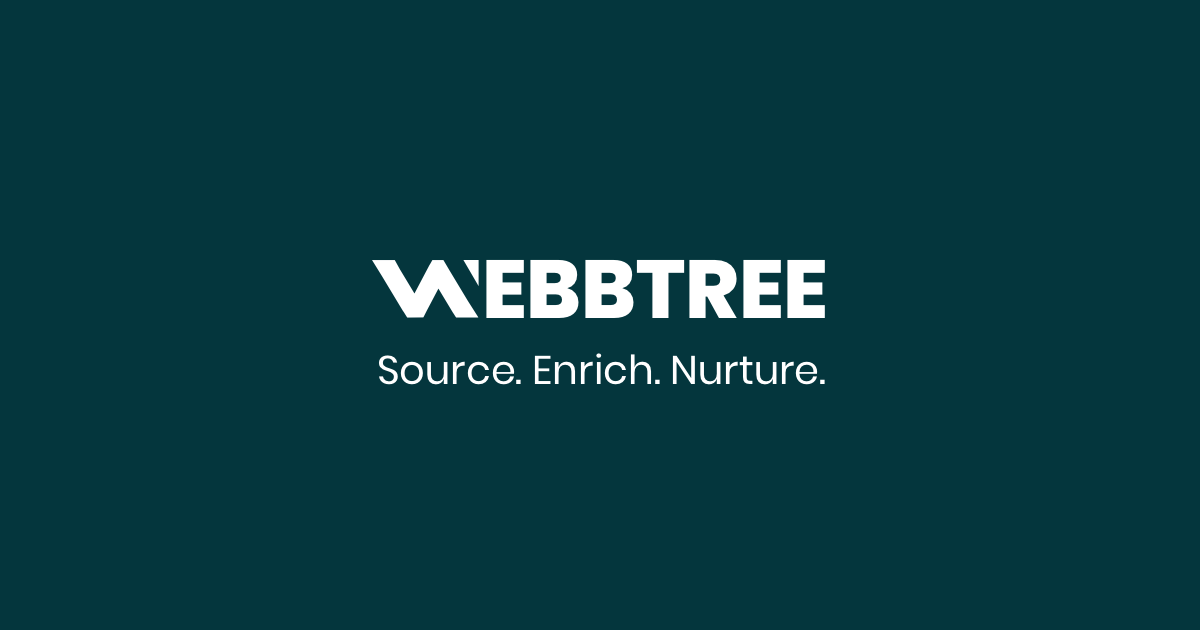The repercussions of the pandemic were overwhelming for hiring organizations across the globe. In a matter of weeks, talent acquisition leaders were forced to reexamine hiring strategies and adapt to a whole new way of operating. Now, with vaccinations on the rise, we’re seeing more and more businesses reopen their doors to the public and hiring efforts resuming. However, recruiting going forward looks quite different.
In an effort to learn more about the hiring landscape at the start of the pandemic and where it’s heading now, Mark Feffer, executive editor of RecruitingDaily, invited three business leaders from enterprise organizations to sit down for a conversation on talent acquisition:
 Cheryl Gochis, CHRO & VP, Human Resources, Baylor University
Cheryl Gochis, CHRO & VP, Human Resources, Baylor University
Mrs. Cheryl Gochis was appointed vice president of human resources and CHRO in May 2016 after having served as associate vice president for HR since 2014. She manages and coordinates employment functions at Baylor University that include employee relations, benefits, compensation, recruiting, employee learning and leadership consulting. She is a certified HR professional and learning specialist and also serves on numerous university-wide committees.

Nizet Flores, Human Capital Coordinator, MCM Telecom
Since the start of 2013, Nizet Flores has been acting as a leader of human capital management for MCM Telecom. She’s been instrumental in developing human capital initiatives in line with MCM’s strategy, talent objectives and training goals. Nizet is also an active member of many human resources committees, including AMCHAM, AMEDIRH and Asociación de Internet de México, and participates in the Comité Directivo de Voz MCM, A.C., where she promotes support to vulnerable groups of society.
 Ryan Brooks, Sr. Director, Talent Acquisition, Learning Care Group
Ryan Brooks, Sr. Director, Talent Acquisition, Learning Care Group
Ryan Brooks serves as the Senior Director of Talent Acquisition for Learning Care Group, Inc., a leading provider of childcare in North America and a leader in early education. Ryan is responsible for leading and developing LCG’s talent acquisition strategies and delivery programs, including workforce/capacity planning, talent attraction, selection practices and measurement. Ryan has over 15 years of talent acquisition experience and joined the LCG team in 2018.
The Effects of COVID-19
As is typical during times of turmoil, we saw hiring teams having to get creative to address new organizational needs while facing resource constraints. To learn how our leaders’ organizations were affected by COVID-19, Mark started his conversations by asking about some of the pandemic-related ramifications their organizations faced.
In first speaking with Cheryl Gochis, Mark heard how the uncertainty brought on by COVID-19 affected her organization, Baylor University, and led to a temporary hiring freeze. “All of us have experienced the consequences of the pandemic. We did not know how many students we would have return. We did not know what the cost of testing would be and vaccines and isolating students…so we made the difficult decision to put a hiring freeze in place,” she said.
Hiring freezes, unfortunately, became common practice for businesses across the globe, but many leaders, including Cheryl, still had the ability to target talent for roles deemed essential. This point leads to the biggest challenge Mark identified in speaking with these leaders: growing active candidate pools to be in line with open opportunities.
“It seemed like in the past we had more people that were in our candidate pool than were looking for a job,” said Cheryl.
Ryan Brooks shared similar sentiments. While talent acquisition continued for Learning Care Group, he said, maintaining a strong pool of candidates proved challenging. According to Ryan, “We’re seeing decreased visits to our posts. We’re getting decreased applicant flow in an industry where we already see low applicant flow… Things are coming back as far as families wanting to enroll, but you’re just not seeing that same bounce back with people wanting to work.”
Nizet Flores also experienced attraction challenges, specifically related to bringing the right skills on board. “My priorities right now are acquiring talent – especially technical talent… Most of my collaborators are telecommunications engineers,” she said.
The Impact on Candidates
COVID-19 not only caused a shift in the way these leaders operate, it also changed their interactions and experiences with candidates. As health concerns became top of mind, job prospects expected future employers to take safety seriously and offer flexible employment options, remote interviews and virtualized onboarding.
For some leaders, like Nizet, the switch to remote work and digital-based recruiting had its share of hiccups, although the rest of the hiring process remained unchanged. “When it comes to recruitment, [COVID-19] hasn’t impacted us a lot,” she said. “We do find candidates or applicants who aren’t that familiar with technology, so having them connect was complicated… But all of the onboarding process is still done face-to-face – of course, with the applicable protocols – and that gave a little bit more certainty to applicants or to new hires.”
Others, like Cheryl Gochis, experienced larger disruptions to recruiting and worried about COVID-19’s effect on their candidate communication process – something she believes was key for easing applicant apprehension and building strong connections. In order to combat these concerns, her team focused on over-communicating and giving her candidates a clear picture of what to expect. “What we’ve done well is still add that personal experience to recruiting and set better expectations for candidates,” she explained. “Say we’re in between semesters, for example, when we do a lot of preparatory work. If you don’t hear from us for a couple of weeks, it’s not because we’re not interested… If you get concerned, you can call our recruiters, but there’s also a reasonable window when you’ll hear from us.”
Ryan Brooks dealt with a different dilemma. Learning Care Group primarily operates in a face-to-face manner, making safety a key concern for his talent. Ryan stated, “People in general, there’s a pocket of them that aren’t ready to just come back.” To counteract this, Ryan said, “We’ve done a lot of updating and messaging around our safety protocols, using that almost as a recruiting tool. It’s appealing to people when they see all that and we’ve gotten that feedback.”
What’s Working Well?
After these talent acquisition leaders shared how they’ve adapted to changes in candidate-related activities, Mark transitioned to talking about success in other areas of recruiting. Overall, we learned that, despite facing their fair share of adversity, our interviewees managed to sustain hiring momentum.
Ryan Brooks, for example, prioritized building awareness around his open opportunities by using technology as the driver. Ryan said that he prioritized “investing in a lot of tools that help source and really get us in more of a marketing space and brand-awareness space.” For Learning Care Group, its commitment to delivering a positive impact on children and desiring to be part of the experience is a message that’s key to engaging prospective candidates. When it comes to broadcasting that message, it’s all about leveraging the right channels. Ryan went on to discuss the importance of sharing Learning Care Group’s value proposition on career sites, during phone and text conversations, email and across social media.
Similar to Ryan, Cheryl Gochis recognizes the important role technology plays in maintaining talent acquisition and spent time upgrading her infrastructure to alleviate issues. “We had a good recruiting system, but literally every single thing that was in the system had to be re-entered into our other system, thus [we had] tons of mistakes,” said Cheryl. To resolve this, she made usability a key part of the criteria when evaluating new platforms and transitioning to the new applicant-tracking solution, which Cheryl describes as, “a comprehensive one-stop-shop … 100% more intuitive than our old way of doing things.”
On the other hand, Nizet Flores focused on creating initiatives to continue talent acquisition operations. Through strong relationships with higher-education organizations, Nizet was able to successfully institute new programs to secure the talent MCM Telecom required. To provide more context, Nizet stated, “The one that is really working for me right now is a seeding program. I have an agreement with the main universities – both public and private universities – and I ask young people to do internships in MCM.”
This isn’t to say technology hasn’t been crucial for MCM, however. Nizet detailed an internal recruitment process that’s strongly aided by an HCM platform. “[Candidates] apply for a position. We conduct assessments. We assess their competencies. And of course, we have a tool for HCM that allows us to compare their profiles and their experience.”
The Role of Technology in Recruiting
Technology quickly became a recurring theme during the mid-way point of these conversations. Even before the pandemic, leveraging recruiting technologies was common practice for hiring teams. With work now conducted remotely, however, reliance on technology increased even further, leading Mark to inquire more about its importance today.
Ryan Brooks said technology was foundational for recruiting and described how new, specific capabilities were making his life easier. He emphasized the importance of applicant tracking, CRM and sites like LinkedIn and Indeed, but then went on to detail new advancements he sees as being particularly valuable. “I get excited about AI as what can be, what can I automate – this will help [recruiters], whether it’s pipelining more candidates, whether it’s pre-screening, that kind of stuff,” he said.
Other leaders, like Nizet Flores, are hesitant regarding the applicability and use of emerging technologies such as today’s AI. When questioned about it, Nizet stated, “I still think [AI] is a little bit far away [for us]. I do see that some companies are working with artificial intelligence, but we do still need that contact with people … you need that empathy.” However, Nizet went onto describe how she envisions AI becoming increasingly valuable in the future, especially when used to evaluate candidates.
When asked directly about technology, Cheryl Gochis first spoke of focusing on its use by candidates. “With recruiting, [we want tools that] ease the process for the candidate and that yield the best information,” she said. “I think great technology companies are paying attention to how do you yield the best experience and how do you get the best candidates.” She then segued to discussing the recruiters’ usage of technology, emphasizing the need to balance simplicity and complexity. Cheryl mentioned, “[The solution] has to be enough, but not so much that you’re almost overwhelmed by all the bells and whistles.” In other words, it has to deliver organizations with everything needed to drive talent acquisition without requiring a great deal of training.
What the Future Holds
Mark ended the conversation with recruiting leaders by asking about the future of talent acquisition.
Like many other individuals we’ve spoken to previously, Nizet Flores believes pandemic-driven procedures are here to stay. “I think that we will not go back to our whole process of having people come to the offices and having that direct contact,” she said. “I think that we can maintain some activities or some activities that need not be compared in person. And we will maintain those activities that we are doing in person.”
Cheryl Gochis expressed similar thoughts. When asked about what’s next, she mentioned, “I very much doubt that we will go back to work how we used to two years ago. I think that all of this is here to stay – that all of these virtual tools and having things done virtually will become our new normal.” Cheryl also detailed the importance of organizational hiring evaluation – assessing talent needs pragmatically and approaching recruiting with their business and employees in mind. Cheryl ended the conversation by stating, “We’re willing to think differently. We’re willing to do ultimately what’s best for the university and do right by people.”
Ryan focused on technology being the future and foresees it driving hiring productivity. To elaborate, Ryan stated, “I really like the kind of refocus we’ve done from tools that require manual effort to move toward more automated tools, retargeting tools, things of that nature… I think it’s going to be huge in this world.” Ryan concluded by stressing the importance of centralized and autonomous marketing in attracting and engaging talent. He knows how critical it is for the business to get opportunities to be in front of the right people.
To learn more about the trends shaped by COVID-19 and hear advice on how to best prepare for the hiring restart, take a look at Recruiting Daily’s new report titled, Post-Pandemic Recruiting: A guide for recruiters, hiring managers, and candidates.



















